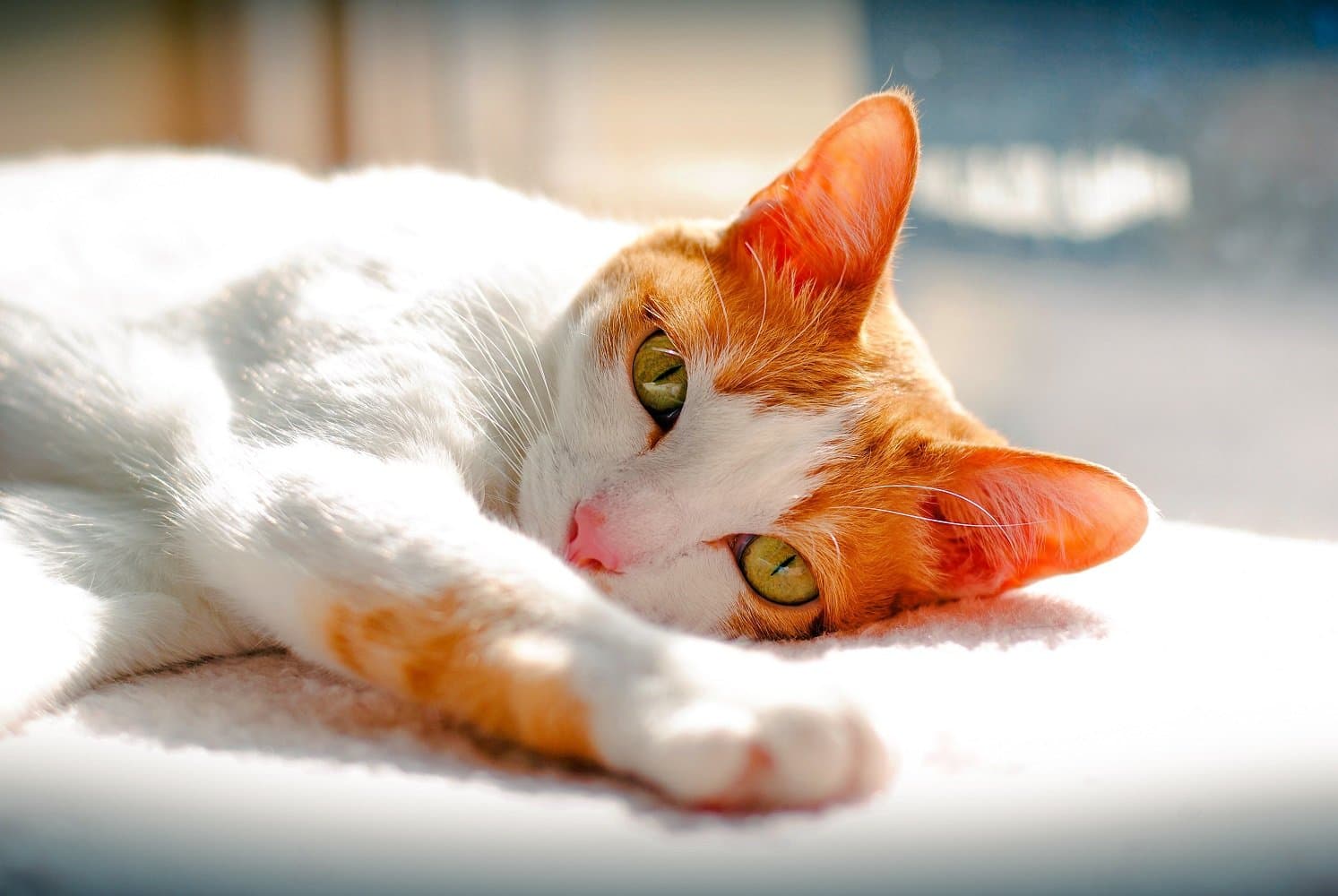Congenital myasthenic syndrome (CMS) is a genetic neuromuscular disorder caused by defects at the neuromuscular junction. In cats, this condition is associated with a deficiency of the acetylcholinesterase (AChE).
The deficiency of the enzyme is caused by a truncation of the collagen-like tail subunit of acetylcholinesterase (COLQ). The deficiency of the signal transduction termination leads to prolonged muscle contraction and muscle stiffness (spasticity) which interferes with normal movement. The disease seems to be associated with Devon Rex and Sphynx cats.

Background information
Congenital myasthenic syndrome (CMS) is a genetic neuromuscular disorder caused by defects at the neuromuscular junction, and it has been described both in humans and cats. Neuromuscular junctions (or myoneural junctions) are chemical synapses between the motor neuron and the muscle fiber. This is the site at which the motor neuron transmits a signal to the muscle fiber, leading to the muscle contraction. In the first step of this transmission, action potential reaches the terminal of the motor neuron. This leads to the translocation of calcium ions into the neuron.
The calcium ions bind to sensor proteins and cause releasement of neurotransmitters from the motor neuron into the synaptic cleft. Neurotransmitters are chemical messengers which transmit the signal across the neuromuscular junction (as well as across synapses between two neurons and neurons and other target cells). In vertebrates, motor neurons release the neurotransmitter called acetylcholine (ACh).
When released into the synaptic cleft, ACh binds to the receptors on the sheath of muscle fibers (sarcolemma) and opens the channels for the flow of sodium ions into the muscle cells and potassium ions out of the muscle cells. This generates an action potential and muscle contraction (Figure 1).

Figure 1: The Muscle Contraction Process. 1) The action potential reaches the terminal (B) of the axon of the motor neuron (A). 2) Calcium ions are translocated into the neuron. 3) Acetylcholine is released from the motor neuron into the synaptic cleft (C). 4) ACh binds to the receptors on the sheath of muscle fibers (sarcolemma) and 5) opens the channels for the flow of sodium ions into the muscle cells and potassium ions out of the muscle cells (D). 6) This generates an action potential which leads to muscle contraction (credits).
Congenital myasthenic syndrome cases can be characterized by functional or structural abnormalities in the proteins of the presynaptic, synaptic or postsynaptic regions of the neuromuscular junction. In cats, CMS is associated with a deficiency of the acetylcholinesterase (AChE). This enzyme breaks down acetylcholine and other neurotransmitters and, in this way, catalyzes the termination of the signal transduction at the neuromuscular junction.
The deficiency of the enzyme is caused by a truncation of the collagen-like tail subunit of acetylcholinesterase (COLQ) (Gandolfi et al, 2015). The deficiency of the signal transduction termination leads to prolonged muscle contraction and muscle stiffness which interferes with normal movement.

Genetics
The truncation of the collagen-like tail subunit of acetylcholinesterase (COLQ) leading to the deficiency of the acetylcholinesterase (AChE) has been associated with a mutation identified in the COLQ gene. The mutation has been defined in Devon Rex and Sphynx breeds and it is inherited in the autosomal recessive mode (Gandolfi et al, 2015).
This means that a cat must inherit two mutated copies of the gene (alleles), one from each of the parent, in order to be affected by the disorder. Cats who carry only one mutated allele and one healthy allele remain silent carriers (they can pass on the trait to the offspring but aren't affected themselves). If two silent carriers cross, there is a 25% chance for each kitten to be affected. Two affected cats give only affected offspring (Figure 2).

Figure 2: Recessive mode of inheritance
Symptoms and diagnosis
Clinical presentation of the disease involves general muscle weakness, prolonged muscle contraction, muscle stiffness, head bobbing, fatigability. The signs can typically be observed already around 3 weeks of age and they slowly progress over time. The diagnosis can be accurately assessed through the genetic testing for the defect COLQ variant.
Treatment and prognosis
The prognosis of the CMS varies. Some affected cats may develop aspiration pneumonia or even asphyxiated due to choking on food. The treatment and prognosis of the disease, both in humans and cats, could be significantly improved with the help of the feline model of the disorder. It is important, however, to keep in mind that there are other candidate genes associated with feline CMS too.
For example, reduced expression of α‐dystroglycan has been reported in affected Devon Rex and Sphynx cats too (Martin et al, 2008). Note: It is not recommended to breed the carriers in order to prevent the progression of the condition to the offspring.

Congenital myasthenic syndrome is a genetic disorder with variable prognosis. While there is known cause and genetic factor revealed, there may be other candidate genes we yet have to learn about. This is why it is important to assess further studies of this and other feline diseases. While this leads to the betterment of feline science and health, it also serves as a great model for the human form of disease.
Bibliography
1. Gandolfi B, Grahn RA, Creighton EK, Williams DC, Dickinson PJ, Sturges BK, Guo LT, Shelton GD, Leegwater PAJ, Longeri M, Malik R, Lyons LA. (2015). COLQ variant associated with Devon Rex and Sphynx feline hereditary myopathy. Anim Genet. 46(6): 711–715. doi: [10.1111/age.12350]
2. Martin PT, Shelton GD, Dickinson PJ, Sturges BK, Xu R, LeCouteur RA, Guo LT, Grahn RA, Lo HP, North KN, Malik R, Engvall E, Lyons LA. (2009). Muscular Dystrophy associated with alpha-dystroglycan deficiency in Sphynx and Devon Rex cats. Neuromuscul Disord. 18(12): 942–952. doi: 10.1016/j.nmd.2008.08.002



